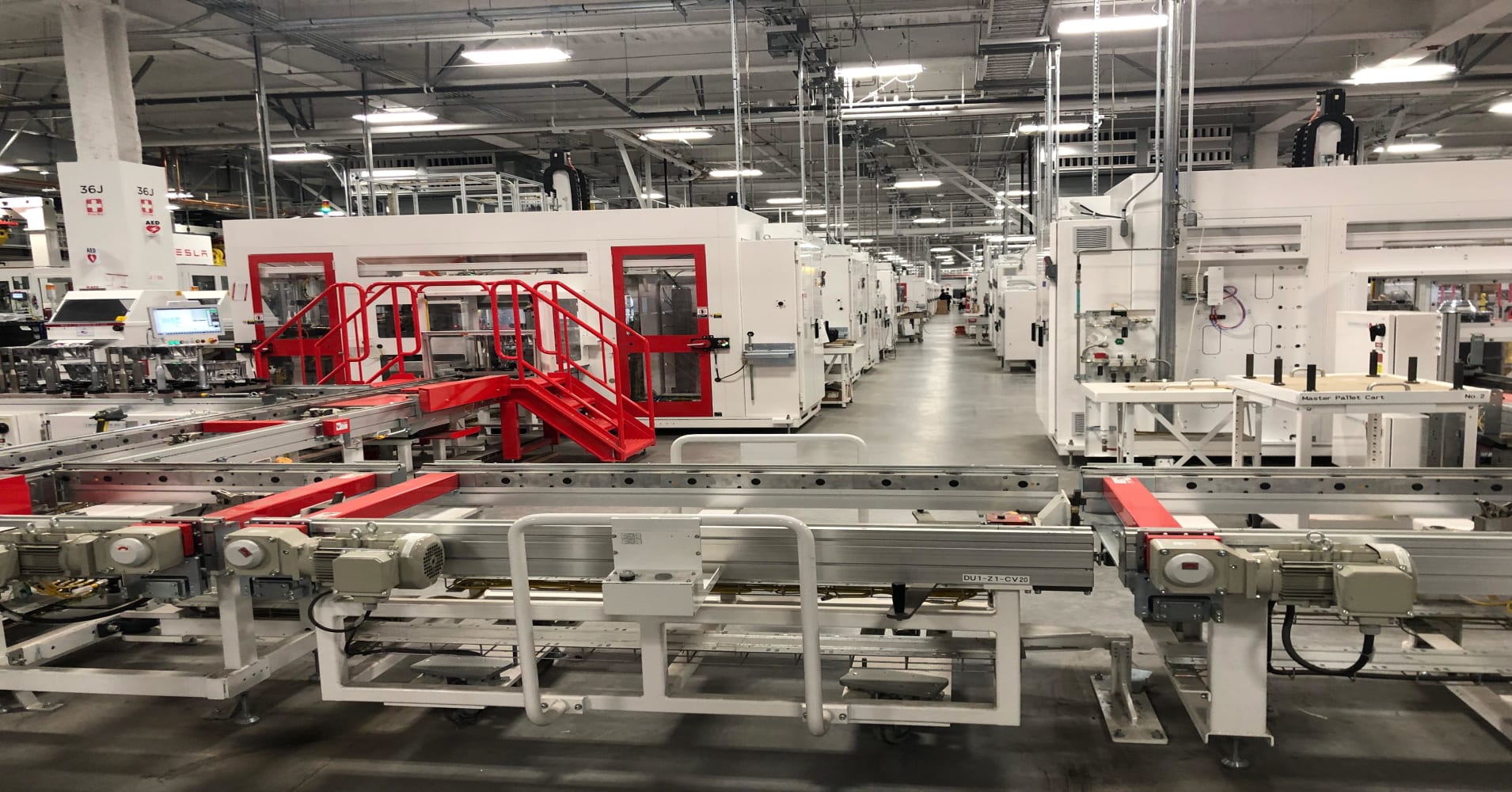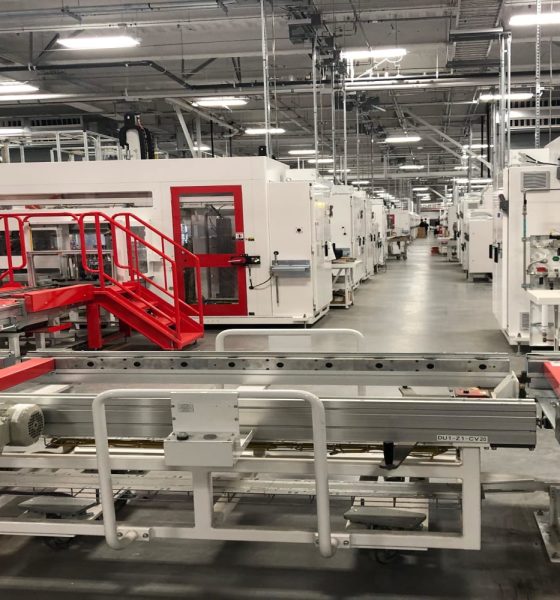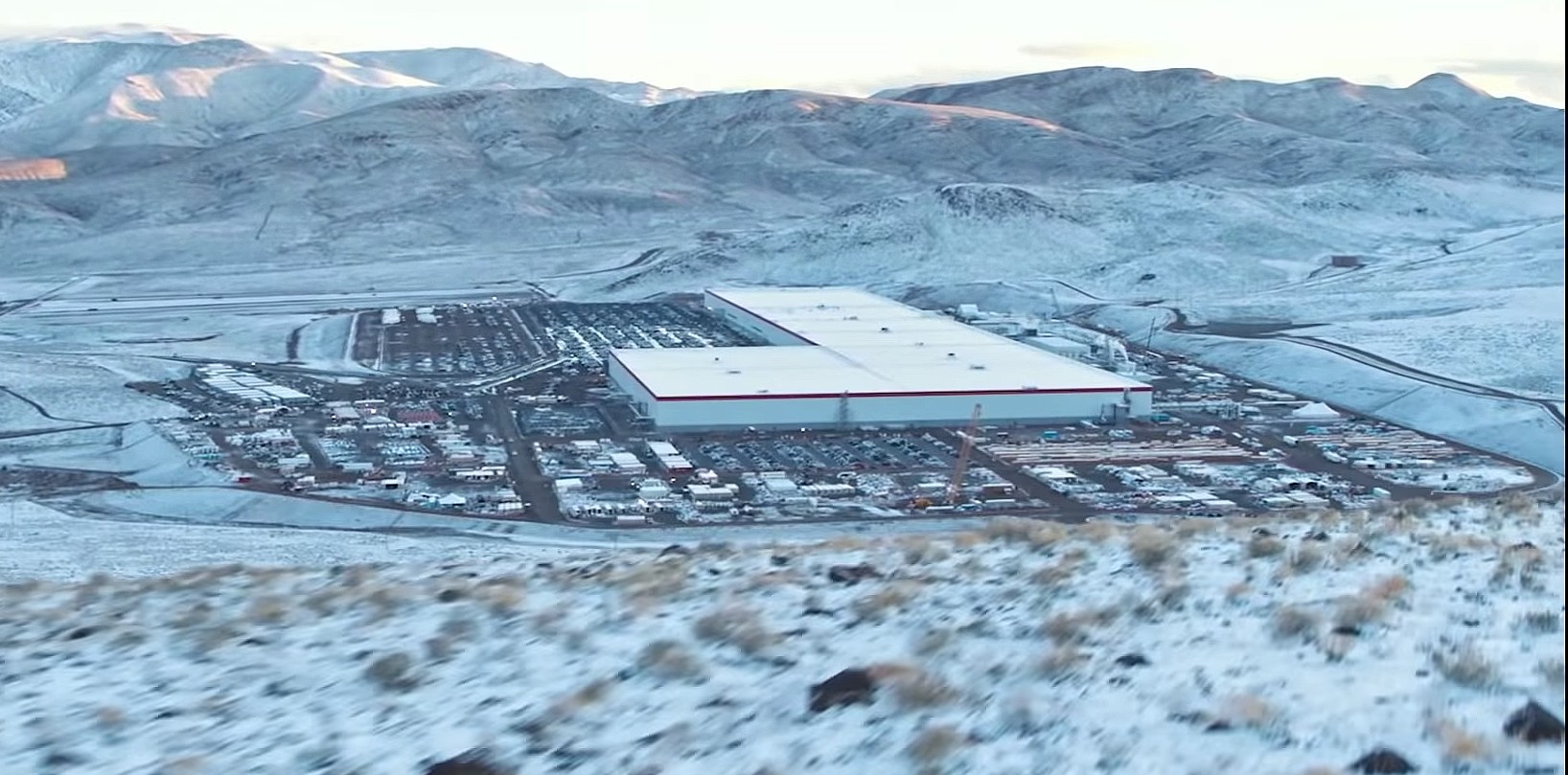

News
Electric car battery production causes less CO2 emissions than once thought: study
The classic anti-Tesla argument alleging that CO2 emissions from battery production negates the positive environmental impact of electric vehicles may have been disproven for good. This comes after the IVL Swedish Environmental Research Institute, one of the firms responsible for the original anti-EV claim, completed a new study that showed a much different result.
The IVL conducted a study in 2017 which revealed that the emissions from the production of lithium-ion batteries was responsible for a large amount of CO2, making the purchase of an electric car practically pointless in an environmental sense. The 2017 study claimed that the production of EV batteries emits around 150 and 200 kg of CO2 per kWh. However, a new study, summarized in a recent press release from IVL, showed the amount of CO2 emissions from battery production has been reduced to between 61 and 106 kg of CO2 equivalent per kWh.
Erik Emilsson, a researcher for the IVL stated that “emissions are lower now is mainly due to the fact that battery factories have been scaled up and are running at full capacity, which makes them more efficient per unit produced. We have also taken into account the possibility of using electricity that is virtually fossil-free in several of the production stages.”
The IVL believes this reduced number can get even lower with the development of more sustainable techniques during the different states of the electric car life cycle. For example, some Tesla Superchargers and other EV chargers are still powered by a CO2-emitting resource. Tesla CEO Elon Musk stated in October 2019 that the company’s objective is to move away from this “as fast as possible” by adding solar panels to Supercharger stations.
Also adding Tesla Solar to our Supercharger stations as fast as possible. Goal is 24/7 clean power with no blackouts.
— Elon Musk (@elonmusk) October 10, 2019
Musk is not the only automotive executive looking to move away from coal-powered electric vehicle charging stations. Volkswagen Auto Group CEO Herbert Diess, who thinks highly of Musk’s vision of a sustainable future, has also stated that it is imperative for manufacturers of charging stations to make their products CO2-free.
“Coal and CO2-free electricity is a must for electric cars,” he said at a Volkswagen event in March 2019. We call on industry, politics, and society to jointly set all levers in motion to help electric-mobility achieve a breakthrough.”
The development of cleaner manufacturing doesn’t stop at the factory, however. Mining the materials for vehicle batteries is also a contributor to the negative environmental impact of electric cars. Mining can have a significant environmental and social impact. Batteries contain metals such as lithium, cobalt, nickel, and manganese.

More information is needed on the environmental impact of metal supply chains as well as better traceability processes if we are to ensure sustainable production across the entire chain,” Emilsson said. The development of new batteries is moving away from the most damaging metals, especially cobalt, an element that will be replaced in batteries by utilizing more nickel. Among those leading the pack in these efforts is Tesla as well.
The advancement in the production of batteries and electric vehicles as a whole assists in the fight against global climate issues. Technology continues to improve and the use of environmentally detrimental materials will likely be phased out as knowledge of battery systems increases. Many forget that the electric car industry is very new, especially compared to its petrol-based counterpart that has been around since the late 1800s.
Electric cars will only continue to advance in every stage, from mining to production, to driving, to recycling. The news from IVL that emissions during the production of these sustainable vehicles have decreased significantly shows the industry continues to grow and do what it was created to accomplish: save our planet from environmental catastrophe from the use of gas-powered vehicles that contribute to the steady increase in CO2 into our atmosphere.
The results of the IVL’s recent study could be accessed below.
IVL – Lithium-Ion Vehicle Battery Production by Simon Alvarez on Scribd

News
Tesla FSD fleet is nearing 7 billion total miles, including 2.5 billion city miles
As can be seen on Tesla’s official FSD webpage, vehicles equipped with the system have now navigated over 6.99 billion miles.

Tesla’s Full Self-Driving (Supervised) fleet is closing in on almost 7 billion total miles driven, as per data posted by the company on its official FSD webpage.
These figures hint at the massive scale of data fueling Tesla’s rapid FSD improvements, which have been quite notable as of late.
FSD mileage milestones
As can be seen on Tesla’s official FSD webpage, vehicles equipped with the system have now navigated over 6.99 billion miles. Tesla owner and avid FSD tester Whole Mars Catalog also shared a screenshot indicating that from the nearly 7 billion miles traveled by the FSD fleet, more than 2.5 billion miles were driven inside cities.
City miles are particularly valuable for complex urban scenarios like unprotected turns, pedestrian interactions, and traffic lights. This is also the difference-maker for FSD, as only complex solutions, such as Waymo’s self-driving taxis, operate similarly on inner-city streets. And even then, incidents such as the San Francisco blackouts have proven challenging for sensor-rich vehicles like Waymos.
Tesla’s data edge
Tesla has a number of advantages in the autonomous vehicle sector, one of which is the size of its fleet and the number of vehicles training FSD on real-world roads. Tesla’s nearly 7 billion FSD miles then allow the company to roll out updates that make its vehicles behave like they are being driven by experienced drivers, even if they are operating on their own.
So notable are Tesla’s improvements to FSD that NVIDIA Director of Robotics Jim Fan, after experiencing FSD v14, noted that the system is the first AI that passes what he described as a “Physical Turing Test.”
“Despite knowing exactly how robot learning works, I still find it magical watching the steering wheel turn by itself. First it feels surreal, next it becomes routine. Then, like the smartphone, taking it away actively hurts. This is how humanity gets rewired and glued to god-like technologies,” Fan wrote in a post on X.
News
Tesla starts showing how FSD will change lives in Europe
Local officials tested the system on narrow country roads and were impressed by FSD’s smooth, human-like driving, with some calling the service a game-changer for everyday life in areas that are far from urban centers.

Tesla has launched Europe’s first public shuttle service using Full Self-Driving (Supervised) in the rural Eifelkreis Bitburg-Prüm region of Germany, demonstrating how the technology can restore independence and mobility for people who struggle with limited transport options.
Local officials tested the system on narrow country roads and were impressed by FSD’s smooth, human-like driving, with some calling the service a game-changer for everyday life in areas that are far from urban centers.
Officials see real impact on rural residents
Arzfeld Mayor Johannes Kuhl and District Administrator Andreas Kruppert personally tested the Tesla shuttle service. This allowed them to see just how well FSD navigated winding lanes and rural roads confidently. Kruppert said, “Autonomous driving sounds like science fiction to many, but we simply see here that it works totally well in rural regions too.” Kuhl, for his part, also noted that FSD “feels like a very experienced driver.”
The pilot complements the area’s “Citizen Bus” program, which provides on-demand rides for elderly residents who can no longer drive themselves. Tesla Europe shared a video of a demonstration of the service, highlighting how FSD gives people their freedom back, even in places where public transport is not as prevalent.
What the Ministry for Economic Affairs and Transport says
Rhineland-Palatinate’s Minister Daniela Schmitt supported the project, praising the collaboration that made this “first of its kind in Europe” possible. As per the ministry, the rural rollout for the service shows FSD’s potential beyond major cities, and it delivers tangible benefits like grocery runs, doctor visits, and social connections for isolated residents.
“Reliable and flexible mobility is especially vital in rural areas. With the launch of a shuttle service using self-driving vehicles (FSD supervised) by Tesla in the Eifelkreis Bitburg-Prüm, an innovative pilot project is now getting underway that complements local community bus services. It is the first project of its kind in Europe.
“The result is a real gain for rural mobility: greater accessibility, more flexibility and tangible benefits for everyday life. A strong signal for innovation, cooperation and future-oriented mobility beyond urban centers,” the ministry wrote in a LinkedIn post.
News
Tesla China quietly posts Robotaxi-related job listing
Tesla China is currently seeking a Low Voltage Electrical Engineer to work on circuit board design for the company’s autonomous vehicles.

Tesla has posted a new job listing in Shanghai explicitly tied to its Robotaxi program, fueling speculation that the company is preparing to launch its dedicated autonomous ride-hailing service in China.
As noted in the listing, Tesla China is currently seeking a Low Voltage Electrical Engineer to work on circuit board design for the company’s autonomous vehicles.
Robotaxi-specific role
The listing, which was shared on social media platform X by industry watcher @tslaming, suggested that Tesla China is looking to fill the role urgently. The job listing itself specifically mentions that the person hired for the role will be working on the Low Voltage Hardware team, which would design the circuit boards that would serve as the nervous system of the Robotaxi.
Key tasks for the role, as indicated in the job listing, include collaboration with PCB layout, firmware, mechanical, program management, and validation teams, among other responsibilities. The role is based in Shanghai.
China Robotaxi launch
China represents a massive potential market for robotaxis, with its dense urban centers and supportive policies in select cities. Tesla has limited permission to roll out FSD in the country, though despite this, its vehicles have been hailed as among the best in the market when it comes to autonomous features. So far, at least, it appears that China supports Tesla’s FSD and Robotaxi rollout.
This was hinted at in November, when Tesla brought the Cybercab to the 8th China International Import Expo (CIIE) in Shanghai, marking the first time that the autonomous two-seater was brought to the Asia-Pacific region. The vehicle, despite not having a release date in China, received a significant amount of interest among the event’s attendees.








